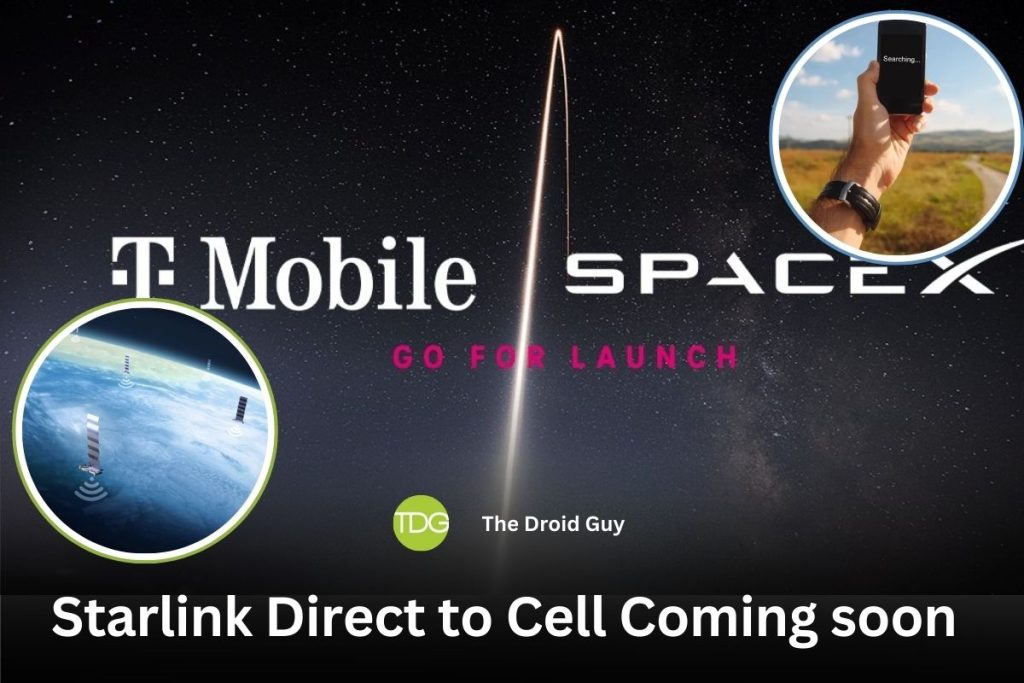You Will Soon Get Starlink Mobile Service Directly On Your Phone Through T-Mobile And Global Partners.
STARLINK’S DIRECT-TO-CELL (DTC) GOES GLOBAL
In a groundbreaking move poised to reshape mobile connectivity, SpaceX’s Starlink has launched its Direct-to-Cell (DTC) technology, collaborating with major telecommunications companies worldwide. This initiative aims to eliminate mobile dead zones and provide seamless connectivity in even the most isolated regions. Notably, T-Mobile in the United States is at the forefront of this revolution, alongside other key players globally.

The Partners in Connectivity
The following telecommunications companies have joined forces with Starlink to leverage its satellite technology for enhanced mobile coverage:
| Country | Telecommunications Company |
|---|---|
| 🇺🇸 United States | T-Mobile |
| 🇨🇦 Canada | Rogers |
| 🇳🇿 New Zealand | One NZ |
| 🇯🇵 Japan | KDDI |
| 🇦🇺 Australia | Optus |
| 🇨🇭 Switzerland | Salt |
This collaboration signifies a monumental shift in how mobile networks can operate, particularly in areas where traditional infrastructure is either impractical or impossible.
The Vision Behind DTC Technology
Starlink’s DTC technology is designed to connect standard smartphones directly to satellites, eliminating the need for specialized satellite phones. This capability is particularly crucial for regions that are often underserved by conventional cellular networks. According to T-Mobile CEO Mike Sievert, “More than just a groundbreaking alliance, this represents two industry-shaking innovators challenging the old ways of doing things to create something entirely new”.
The initial focus of the DTC service will be on providing text messaging capabilities, including SMS and MMS, with plans to expand into voice and data services in the future. This phased approach allows for a gradual rollout while ensuring that users can stay connected during emergencies or when traveling through remote areas.
Overcoming Industry Challenges
Despite the excitement surrounding this partnership, it has not been without challenges. Major competitors such as AT&T and Verizon have expressed concerns regarding potential interference with their existing networks. They argue that SpaceX’s request for regulatory waivers could lead to harmful disruptions in service quality. In response, SpaceX conducted extensive simulations to demonstrate that their technology would not adversely affect terrestrial networks.
Elon Musk emphasized the importance of this initiative by stating, “The important thing about this is that it means there are no dead zones anywhere in the world for your cell phone”. This statement encapsulates the core mission of Starlink’s DTC initiative: to ensure connectivity wherever there is a clear view of the sky.
Technical Details and Future Prospects
The DTC service will utilize T-Mobile’s mid-band spectrum (specifically 1900 MHz), which is part of both their 4G and 5G networks. This integration means that most smartphones currently on T-Mobile’s network will be compatible with the new service without requiring any additional hardware. The first set of satellites equipped with DTC capabilities was launched in early 2024, marking a significant milestone in the project’s timeline.
As for pricing, while specific details remain under wraps, T-Mobile has indicated that basic features like text messaging will likely be included at no extra cost in many of their popular plans. However, advanced features such as voice calls may incur additional charges or be offered as premium add-ons.
Global Expansion Plans
The collaboration between Starlink and T-Mobile is just the beginning. SpaceX has extended invitations to other carriers worldwide to join this initiative, aiming for truly global connectivity. The current partners, Rogers, One NZ, KDDI, Optus, and Salt, are all set to implement similar services in their respective regions.
This global approach not only enhances connectivity but also fosters competition among telecom providers to innovate further and improve service offerings. As more carriers come on board, users can expect an increasingly robust network capable of delivering reliable service across diverse environments.
Conclusion: A New Era of Connectivity
Starlink’s Direct-to-Cell technology represents a significant leap forward in mobile telecommunications. By partnering with leading telecom companies around the world, including T-Mobile in the U.S., Starlink aims to bridge connectivity gaps that have long plagued rural and isolated areas.
As we move towards a future where connectivity is ubiquitous, regardless of geographical challenges, this initiative could redefine how we think about mobile communication. With ongoing developments and testing set to continue throughout 2024 and beyond, users can look forward to a new era where “dead zones” become a relic of the past.
Starlink’s DTC initiative is not just about enhancing mobile coverage; it is about transforming how we connect with each other and access information, anytime and anywhere.